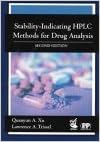Guidelines for Stability Testing of Controlled Substances
1) Purpose
The purpose of this SOP is to outline the procedures for conducting stability studies on controlled substances. Stability testing ensures that these substances maintain their potency, purity, and safety throughout their shelf life under various storage conditions.
2) Scope
This SOP applies to all controlled substances produced, handled, or stored by the organization, including narcotics, stimulants, and sedatives. It is intended for personnel involved in formulation development, quality control, and regulatory compliance.
3) Responsibilities
Formulation Scientist: Responsible for designing the stability study protocol and selecting appropriate testing parameters.
Quality Control (QC) Team: Responsible for conducting stability tests according to the approved protocol and documenting results.
QA Team: Responsible for reviewing data, ensuring compliance with regulatory guidelines, and approving the final stability report.
4) Procedure
4.1 Study Design:
- Identify stability-indicating parameters (e.g., potency, purity, dissolution rate, and microbial activity) relevant to the controlled substance formulation.
- Select appropriate analytical methods (e.g., HPLC, GC-MS) to evaluate these parameters.
- Define storage conditions (e.g., room temperature, refrigeration, humidity) based on product characteristics and regulatory requirements.
- Develop a study protocol outlining the objectives, sampling schedule, and analytical methods to be used.
4.2 Sample Preparation:
- Prepare samples from representative production batches and label them with batch numbers, storage conditions, and sampling time points.
- Store samples in designated stability chambers under specified conditions, with controlled access as per DEA regulations.
4.3 Testing Schedule:
- Conduct initial testing on all samples to establish baseline data for the selected parameters.
- Perform follow-up testing at predetermined intervals (e.g., 1 month, 3 months, 6 months) to monitor changes in stability over time.
- Document all test results and analyze data for trends or deviations from acceptance criteria.
4.4 Data Analysis and Reporting:
- Analyze data using appropriate statistical methods to determine trends and compliance with acceptance criteria.
- Prepare a stability study report summarizing findings, conclusions, and recommendations for storage and handling conditions.
- Submit the report for QA review and archiving, ensuring all data handling complies with DEA regulations.
5) Abbreviations, if any
QC: Quality Control
QA: Quality Assurance
HPLC: High-Performance Liquid Chromatography
GC-MS: Gas Chromatography-Mass Spectrometry
DEA: Drug Enforcement Administration
6) Documents, if any
Controlled Substance Stability Protocol: Document detailing the study plan and methodology.
Analytical Data Records: Data sheets for all tests performed.
7) Reference, if any
ICH Q1A(R2): Stability Testing of New Drug Substances and Products
21 CFR Part 1300: DEA Regulations
8) SOP Version
Version 1.0
